Arctium lappa
Arctium lappa
1. The products in our compound library are selected from thousands of unique natural products; 2. It has the characteristics of diverse structure, diverse sources and wide coverage of activities; 3. Provide information on the activity of products from major journals, patents and research reports around the world, providing theoretical direction and research basis for further research and screening; 4. Free combination according to the type, source, target and disease of natural product; 5. The compound powder is placed in a covered tube and then discharged into a 10 x 10 cryostat; 6. Transport in ice pack or dry ice pack. Please store it at -20 °C as soon as possible after receiving the product, and use it as soon as possible after opening.
Natural products/compounds from Arctium lappa
- Cat.No. Product Name CAS Number COA
-
BCN5979
Caffeic acid331-39-5
Instructions
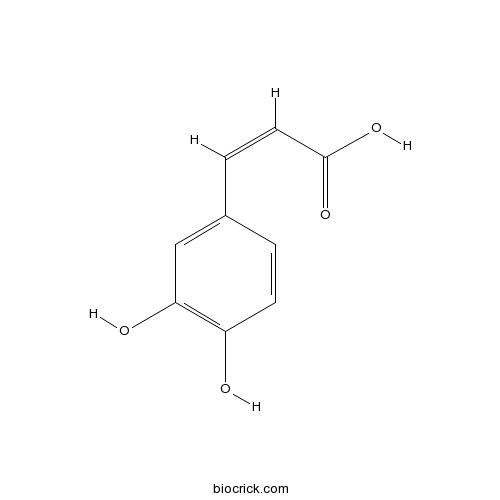
-
BCN2738
Tracheloside33464-71-0
Instructions
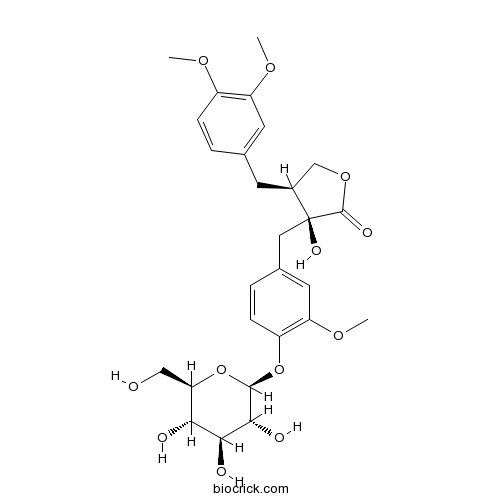
-
BCN6663
Neoliquiritin5088-75-5
Instructions

-
BCN5789
Matairesinol580-72-3
Instructions
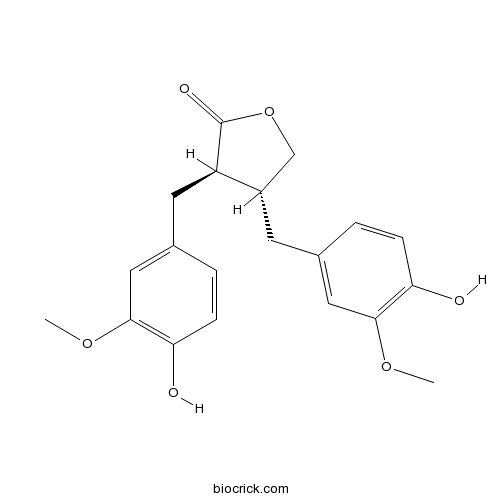
-
BCN6291
Arctigenin7770-78-7
Instructions
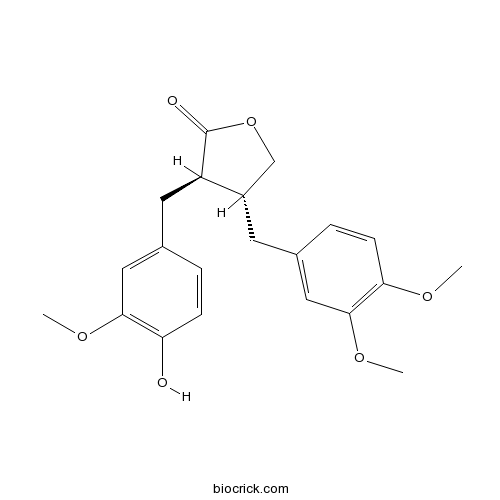
-
BCN3856
Pulegone89-82-7
Instructions
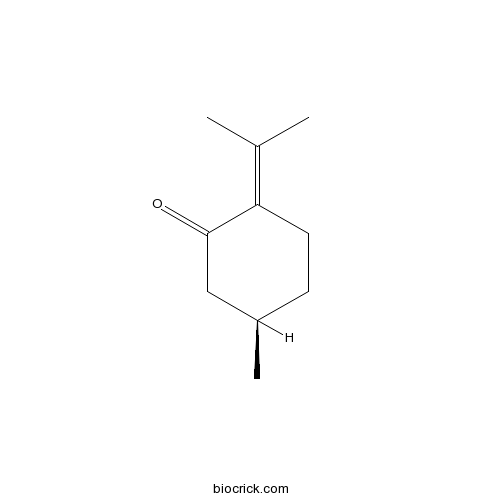
The protective effects of Arctium lappa L. Extract on testicular injuries induced by ethanol in rats.[Pubmed: 30003584]
None
Cell dedifferentiation and multiplication of Burdock (Arctium Lappa) as a medicinal plant.[Pubmed: 29974852]
Arctium lappa L. (Burdock) is an important plant with various pharmacological effects. According to the importance of this plant, optimization of its tissue culture will lead to more investigation and application of it. The aim of this study was to develop protocols for callus induction and shoot regeneration of A. lappa. In order to optimize of tissue culture in A. lappa, callus induction, indirect regeneration and direct regeneration were carried out in factorial experiment based on Completely Randomized Designs (CRDs). Hypocotyl and cotyledon were cultured on the Murashige and Skoog (MS) medium supplemented with different concentrations and combinations of 2,4-Dichlorophenoxyacetic acid (2,4-D) and 6-Benzylaminopurine (BAP) for callus induction. In indirect regeneration experiment various levels of BAP and α-Naphthaleneacetic acid (NAA) and two types of explants (calli derived from cotyledon and hypocotyl) were investigated. In direct regeneration section, various levels of BAP plus 2 mg/l NAA and different explants (cotyledon, hypocotyl and bud) were compared. In both cotyledon and hypocotyl, the maximum callus induction was observed on a media containing 2 mg/l 2,4-D plus 1 mg/l BAP (100% and 76.19% respectively). The highest percentage of indirect regeneration (65%) was observed at 1 mg/l BAP plus 0.5 mg/l NAA on calli from hypocotyl. The highest percentage of direct regeneration (90.33) was observed in hypocotyl with a lateral bud explant on MS medium supplemented with 0.5 mg/l BAP plus 2 mg/l NAA. In this study, optimization of tissue culture protocol for A. lappa was carried out as a research technique, as well as technique for further exploitation of this plant.
Traditional and ethnobotanical dermatology practices in Romania and other Eastern European countries.[Pubmed: 29908576]
The geographic and ecologic specificity of Romania and other Eastern European countries has resulted in the development of an exceptional diversity of medicinal plants. The purpose of this study was to provide an overview of the ethnobotanical dermatology practices based on the use of medicinal plants in this region. The indications, ethnopharmacologic activities, parts used, and administration of 106 medicinal plants are provided. We also discuss the relative importance of these species, using two modified indices of quantitative ethnobotany: Use Value Index and Relative Dermatologic Importance, which were calculated on the basis of etic constructions (indications and ethnopharmacologic activities). The species identified to have the highest dermatologic importance (on a scale of 100) were Brassica oleracea L. (100), Matricaria chamomilla L. (79.17), Arctium lappa L. (74.82), Daucus carota L. (72.28), Equisetum arvense L. (70.47), Juglans regia L. (69.93), Populous nigra L. (65.94), Symphytum officinale L. (63.59), Chelidonium majus L. (57.78), Calendula officinalis L. (57.78), Achillea millefolium L. (57.43), Melilotus officinalis L. (55.25), Allium cepa L. (51.45), Quercus robur L. (51.08), and Betula spp. (50.91). This preliminary study on ethnobotanical dermatology practices indicates that Eastern European traditional medical knowledge represents an important heritage that is currently underexploited.
The suppressive effect of the three-herb extract mixture on vascular and liver inflammation in atherogenic diet with high fructose-fed mice.[Pubmed: 29772938]
Cynanchum wilfordii (Maximowicz) Hemsley (Apocynaceae), Arctium lappa L. var. rubescens Frivald (Asteraceae) and Dioscorea opposite Thunb (Dioscoreaceae) root extracts have been widely used as an alternative for intervening obesity.
Anti-inflammatory actions of herbal medicines in a model of chronic obstructive pulmonary disease induced by cigarette smoke.[Pubmed: 29710457]
The effects of four medicinal herbs (Arctium lappa, Plantago major, Mikania glomerata Spreng and Equisetum arvense) with anti-inflammatory properties were evaluated in a chronic obstructive pulmonary disease (COPD) model. Wistar rats were exposed to cigarette smoke during 8 weeks and one of the groups was orally given a solution containing 4% of each alcoholic herbal extracts during the exposure period. Control group was not exposed to smoke or treated. Histopathological, immunohistochemical and biochemical analyzes were performed. Normal blood plasma levels of gamma glutamyl transferase indicated no toxicity of the administered herbal extracts. The treatment reduced leukocytes influx in bronchoalveolar lavage, mast cell and macrophages numbers in lungs, as well as prevented pulmonary congestion and tracheal metaplasia. Herbal mixture also decreased plasma inflammatory mediator levels and pulmonary expression of annexin A1 and nuclear factor-k?. Our data indicate synergistic and protective effects of the used herbal medicines in animals exposed to cigarette smoke as a potential therapeutic strategy.
Overview of the anti-inflammatory effects, pharmacokinetic properties and clinical efficacies of arctigenin and arctiin from Arctium lappa L.[Pubmed: 29698388]
Arctigenin (AR) and its glycoside, arctiin, are two major active ingredients of Arctium lappa L (A lappa), a popular medicinal herb and health supplement frequently used in Asia. In the past several decades, bioactive components from A lappa have attracted the attention of researchers due to their promising therapeutic effects. In the current article, we aimed to provide an overview of the pharmacology of AR and arctiin, focusing on their anti-inflammatory effects, pharmacokinetics properties and clinical efficacies. Compared to acrtiin, AR was reported as the most potent bioactive component of A lappa in the majority of studies. AR exhibits potent anti-inflammatory activities by inhibiting inducible nitric oxide synthase (iNOS) via modulation of several cytokines. Due to its potent anti-inflammatory effects, AR may serve as a potential therapeutic compound against both acute inflammation and various chronic diseases. However, pharmacokinetic studies demonstrated the extensive glucuronidation and hydrolysis of AR in liver, intestine and plasma, which might hinder its in vivo and clinical efficacy after oral administration. Based on the reviewed pharmacological and pharmacokinetic characteristics of AR, further pharmacokinetic and pharmacodynamic studies of AR via alternative administration routes are suggested to promote its ability to serve as a therapeutic agent as well as an ideal bioactive marker for A lappa.


